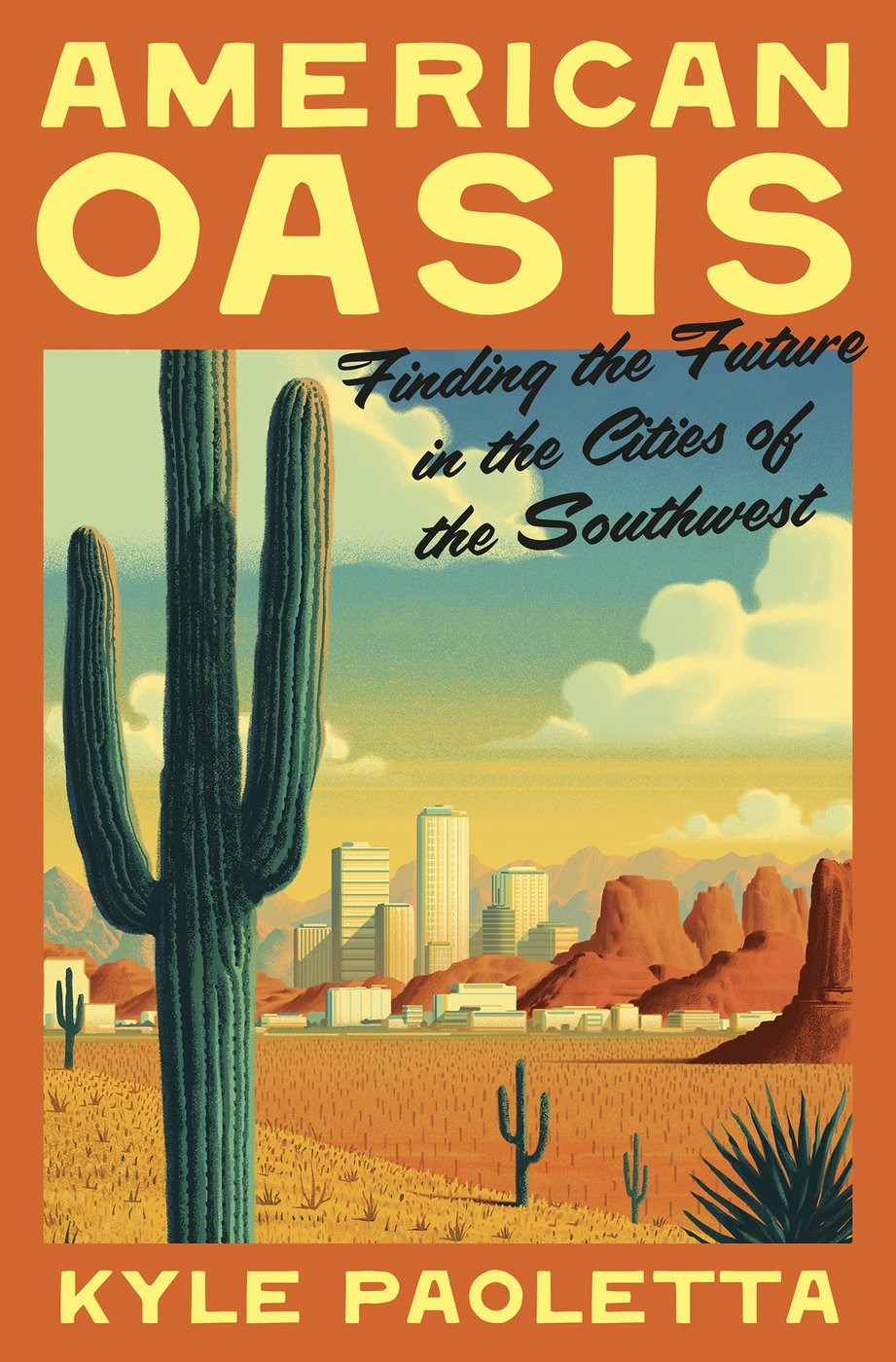Albuquerque-born author Kyle Paoletta takes readers on a virtual road trip around his native region, transporting us across hundreds of years and thousands of miles in his new book “American Oasis: Finding the Future in the Cities of the Southwest.”
As cities worldwide grapple with drought and rising temperatures from climate change, Paoletta describes how the Southwest developed a resilience that he says other regions will need as the globe grows hotter and drier.
He introduces us to what he calls the great cities of the arid Southwest, places that already know much about survival: Las Vegas; Phoenix; Tucson, Arizona; Albuquerque, New Mexico; and El Paso, Texas. Las Vegas built a destination for international visitors in the middle of a scorching desert. Phoenix has embraced widespread air conditioning to keep people alive in triple-degree heat that would otherwise kill them.
“For so many Americans,” he writes, “it is only in recent years that the climate has begun to be understood as a hostile force. To them, I say: Welcome. We Southwesterners have never known anything different.”
Paoletta then recounts the region’s history and diverse culture, stretching back millennia to when Indigenous peoples adapted to the hot, arid land, building structures with the ribs of Saguaro cactus plants and digging canals to transport water for crops in the Phoenix valley.
Later, the tribes had to contend with Spanish conquistadores as much of the land in the Southwest came under the control of Spain dating back to years before the pilgrims set sail for Plymouth.
Most of the region eventually came under Mexican rule, until the Treaty of Guadalupe Hidalgo of 1848 gave the United States an area that today includes California, Nevada, Arizona, New Mexico, Utah and Colorado.
The promise of overnight wealth later drew Anglo boosters to the region, especially Las Vegas, where East Coast crime boss Bugsy Siegel set up legal casinos and put the city on the road to becoming a premier gambling destination.
But such success didn’t touch many groups that continued to suffer extreme inequities into the 20th century.
Blacks in Phoenix were forced as late as the 1960s to live south of the railroad tracks by racist real estate covenants that barred them from owning property in white neighborhoods. Latinos in Tucson suffered into the 1970s under municipal neglect that razed their barrios for highways or turned them into environmental disaster areas.
And along the U.S.-Mexico border, migrants continued to arrive in the sweltering heat in hopes of getting their own shot at the American Dream, many dying along the way.
People who live in and outside of the Southwest must learn how to care for themselves and others amid the drought and extreme heat if the region and beyond are to survive, Paoletta says.
“We can focus on sustaining ourselves, housing each other, and making room for new migrants willing to live by the same ethos of community and environmental care,” he writes. “Or we can continue to emphasize economic growth at all cost.”
___
AP book reviews: https://apnews.com/hub/book-reviews
Anita Snow, The Associated Press


